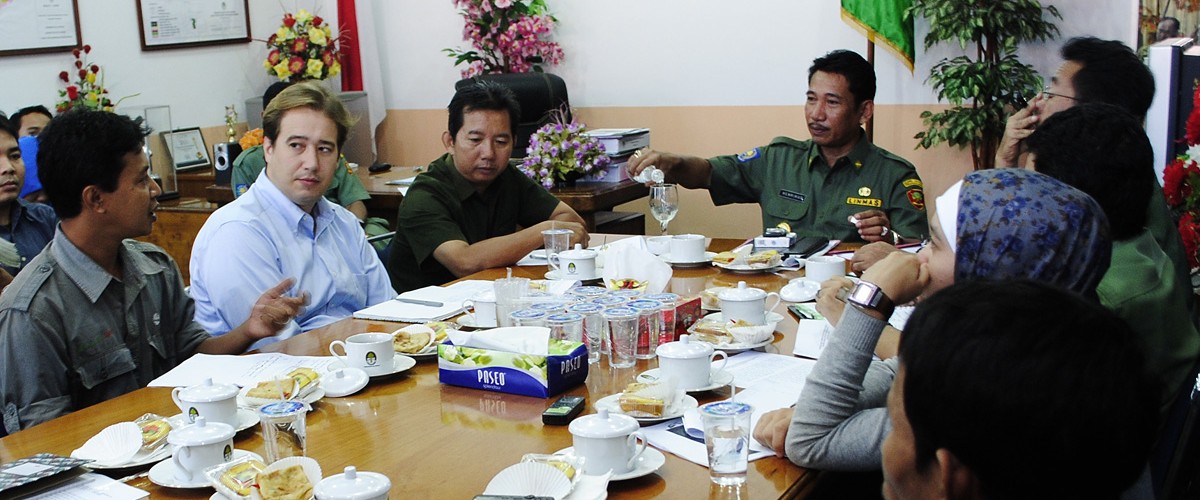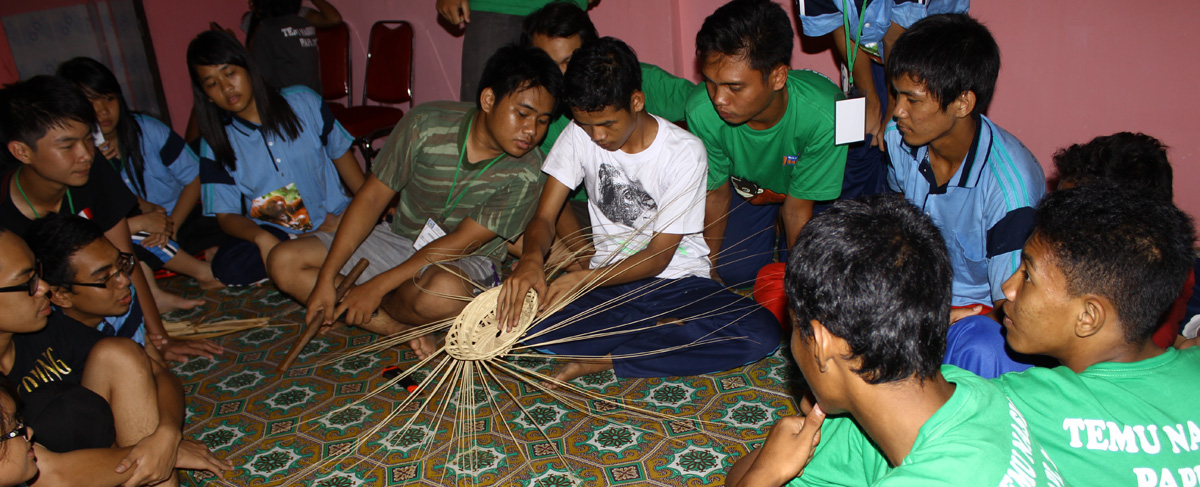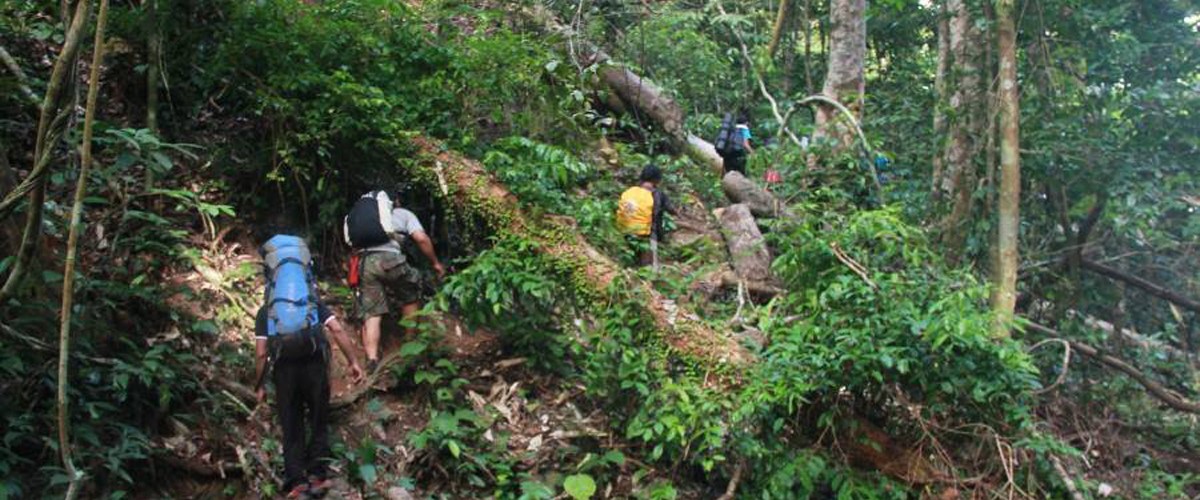By Edi Rahman, GPOCP Animal and Habitat Protection Manager
Forest fires are often a problem the Indonesian people are faced with every year, especially during the dry season. In 2015, Indonesia was literally on fire. Unfortunately, West Kalimantan and the Gunung Palung landscape were not spared from this destruction. Fires were often visible in the lands surrounding our Customary Forests in the villages of Nipah Kuning, Pemangkat, Pulau Kumbang, Padu Banjar and Penjalaan. These villages reside adjacent to Gunung Palung National Park, which represents prime orangutan habitat.
 |
| The forest fires of 2015 caused catastrophic damage to West Kalimantan as well as many other parts of Indonesia. Photo © Tim Laman. |
Oftentimes, the cause of these fires is from common land use practices throughout the region. Many farmers use slash and burn methods to clear land and prepare it for the next season’s crops. These agricultural areas are rich in peat, which is a major source of carbon. Once this peat land is ignited, it is often very difficult to extinguish, and the fires continue to burn underground. GPOCP found that local people were not aware that these practices are the cause of the fires and the broader impacts these fires have on their land, local forests and the economy. These fires come at a severe cost to the community. Besides the economic loss due to not being able to utilize the land, there is also a great human impact. In 2015 many people, including children, became sick or developed asthma due to the inhalation of smoke. Students were not able to even attend school because the smoke was too thick to travel.
 |
| The fires throughout Indonesia in 2015 were often caused by slash and burn farming methods. Photo © Tim Laman. |
Learning from these experiences, we also noticed there was a lack of fire extinguishers, as well as the availability of water, such as in lakes, rivers and ponds, to help put out fires. GPOCP realized fire prevention efforts must be a priority. We must work with the communities to prevent fires in the first place, rather than tackling the fire after it is out of control. GPOCP and Greenpeace Indonesia decided to work together with the Institute of Rural Forest Management, known locally as LPHD, in several villages. We coordinated community discussions on fire prevention, fire-fighter training and the construction of dams to store water for future use. We assisted groups of all ages by talking to school groups about fire prevention and working with villagers to educate and help construct the dams.
 |
| Local villagers and the LPHD of Pemangkat helping construct a dam, which will help conserve water that can be used to fight forest fires in the future. Photo by Edi Rahman, © GPOCP. |
We spent two days training and collecting materials to construct the water holding structures. We used locally sourced materials, such as a water resistant wood, tarps and sacks with ground fill for the support. The primary goal of the dam is to keep the peatland wet so that it does not easily catch fire. Likewise, the water storage acts as a backup method if emergency stocks are needed to extinguish a fire. This stored water can also be used for bathing and washing by the local community as well.
We started this dam-making project in the village of Pemangkat, with the LPHD and local villagers. Soon after we finished in Pemangkat, the villages of Penjalaan, Nipah Kuning, Pulau Kumbang and Padu Banjar initiated construction of a dam in each of their respective areas as well. Each dam is not far from the peat land area and will serve as a preventative measure to control fires before they get out of control. This project was made possible with support from the Arcus Foundation.
 |
| A member of the LPHD of Pulau Kumbang assessing the final construction of the dam. Photo by Edi Rahman, © GPOCP. |








